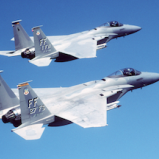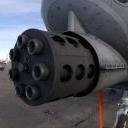It seems to me that there is a problem with the understanding the definition of the terms here. To get a clearance, you first have to have a completed security investigation. Certain types of investigations are necessary for different levels of clearances, and the type of investigation is determined by the anticipated clearance level of the projected duty . For instance a NACLE will allow up to Secret, while an SSBI will allow up to TS and above (i.e. SCI accesses). The investigation type is determined by the sponsor depending on level needed for your anticipated future job. A completed investigation does not give you a clearance, only the eligibility (assuming adjudication is favorable) After the investigation, the report is sent to an adjudication authority, who evaluates the report and decides if the results warrant giving you a clearance (i.e., decides whether or not you are a security risk or not). If the adjudication is positive, you become eligible for a clearance. Eligible doesn't mean you have a clearance, only that you are allowed to get one if needed. For rated officer entry selects, an SSBI investigation is normally done, although in today's backlogged system, for OTS people it is sometimes not completed prior to graduating. For ROTC it depends on timing but the investigation should be complete by graduation and commissioning. But, you still don't have a clearance, only the eligibility for one. Somewhere down the road you arrive at your first duty station. There, you will be placed in a specific position on the unit's manning document, and each position has a clearance level associated with it. For a UPT student, the positions are coded for a Secret clearance (or used to be) so upon arrival you will be given a Secret clearance. The fact that your SSBI investigation makes you eligible for TS does not matter if the manpower position only requires a Secret clearance. By the way, an IP coming in from another unit where he/she held a TS, will be downgraded to a Secret in most cases because an IP has no need for TS clearance in an IP slot (unless he/she will also be doing some addition duty for the Wing that has a higher clearance requirement, which is probably fairly uncommon). That may be different for CSO or ABM training if their syllabus works with more classified content. For the rest of your career, your clearance may go back and forth as you move from job to job, even within the same unit on occasion..
As for the "inactive" comment, if you move to a job where no clearance is needed (get out of the service, for instance, or leave ROTC (commission, but do not go directly onto active duty) your clearance would be suspended (inactive), but can be regained quickly when you return to active duty as long as you are within the period of your investigation's validity (i.e., if the SSBI requires a re-investigation every five years, and you've been off active duty/ROTC training status for only a year, the original SSBI would still be valid and allow for your unit to re-establish a clearance when you process in...no additional investigation required.








